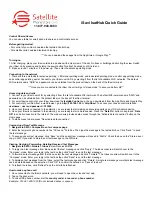
PHOENIX CONTACT page 9 of 10
J10562
P001.1
Figure 15
Unidirectional Wireless Transmission System – RAD-ISM-2400-SET-UD-ANT
J10562
P001.1
Figure 16
5.4 Additional Receivers
Any number of additional receivers
(RAD-ISM-2400-RX Order No. 28 67 306) can be
used. The devices are supplied without a HOPKEY.
The HOPKEY contains the transmission frequencies
used and the hop sequence. This information is
required when installing an additional receiver in an
existing system.
To install an additional receiver, proceed as follows:
1. To protect the modules against ESD, the operating
personnel must remove electrostatic discharge at
appropriate points (e.g., control cabinet) before
touching the modules.
2. The existing system must have already established
a radio connection.
3. Disconnect the power to the existing system.
4. Open the housing of the receiver in the existing
system by pressing both the housing latches on the
sides. Remove the electronics module from the
housing (see Figure 15).
5. At the bottom right on the printed circuit board is a
small printed circuit board in a 10-pos. base – this is
the HOPKEY. Remove the HOPKEY and insert it in
the same position in the new receiver that you wish
to install (see Figure 16).
6. Close all the housing covers and reinsert the devices
in the control cabinet(s).
7. Reconnect the supply voltage – the additional
receiver now receives the same information as the
receiver in the existing system.
8. Repeat the procedure for all additional receivers.
Explanation:
When the supply voltage is connected, the
information is transmitted from the connected
HOPKEY to a non-volatile memory inside the module.
This HOPKEY can then be used to "teach" other
receivers. The HOPKEY can be stored in the last
receiver.
If no HOPKEY is connected, the information inside
the module is used.































